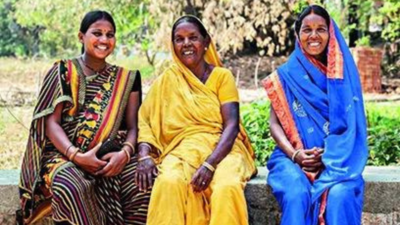ARTICLE AD BOX

NEW DELHI: Sixty-four-year-old Saraswati Devi was married off at 16 in 1976, and by the time she was 30, she was a mother to five sons. If she could do it all over again, Saraswati says she would have fewer children.
But her granddaughter Pooja Kumari today has a voice. A graduate, married at 22, she and her husband decided to not have more than two children.The story of Saraswati, her daughter-in-law and granddaughter - three generations of women reflect India's evolving fertility story and their journey finds space in UNFPA's 2025 State of World Population Report. Residents of Bihar's Sheikhpura district, they reflected on how things have changed from grandmothers to granddaughters over 65 years as women gained a voice slowly to an extent over generations affecting fertility aspirations.Saraswati shared that when she was young all the other women in her village had about that many children. If women had fewer, people thought they were sick, Saraswati recalled. "My mother-in-law always said, "The more children you have, the more hands there are to work in the fields." "We didn't know about contraceptives back then," she said. "When I wanted to stop having children, my mother-in-law insisted that I continue, and I could not disobey her," recalled the 64-year-old.
Her daughter-in law Anita Devi (42) got married when she was 18 years old in the late 1990s. Unlike her mother-in-law, Anita knew about family planning as health workers visited her village. Nevertheless, she ended up having six children- four daughters and two sons - as her husband and mother-in-law wanted more children, especially a son.But things drastically changed for her daughter Pooja Kumari who is 26 and had her first child at 23.
In the following three years, she used contraceptives provided by an Accredited Social Health Activist. She recently decided to have a second child. "We want to raise them well, provide them with a good education, and ensure a secure future for our family. A small family is best," she said.The report noted that in 1960, when India's population was about 436 million, the average woman had nearly six children. But in the years that followed, educational attainment increased, access to reproductive healthcare improved, and more women got a voice. The average woman in India now has about two children.



.png)
.png)
.png)
















 1 day ago
10
1 day ago
10









 English (US) ·
English (US) ·